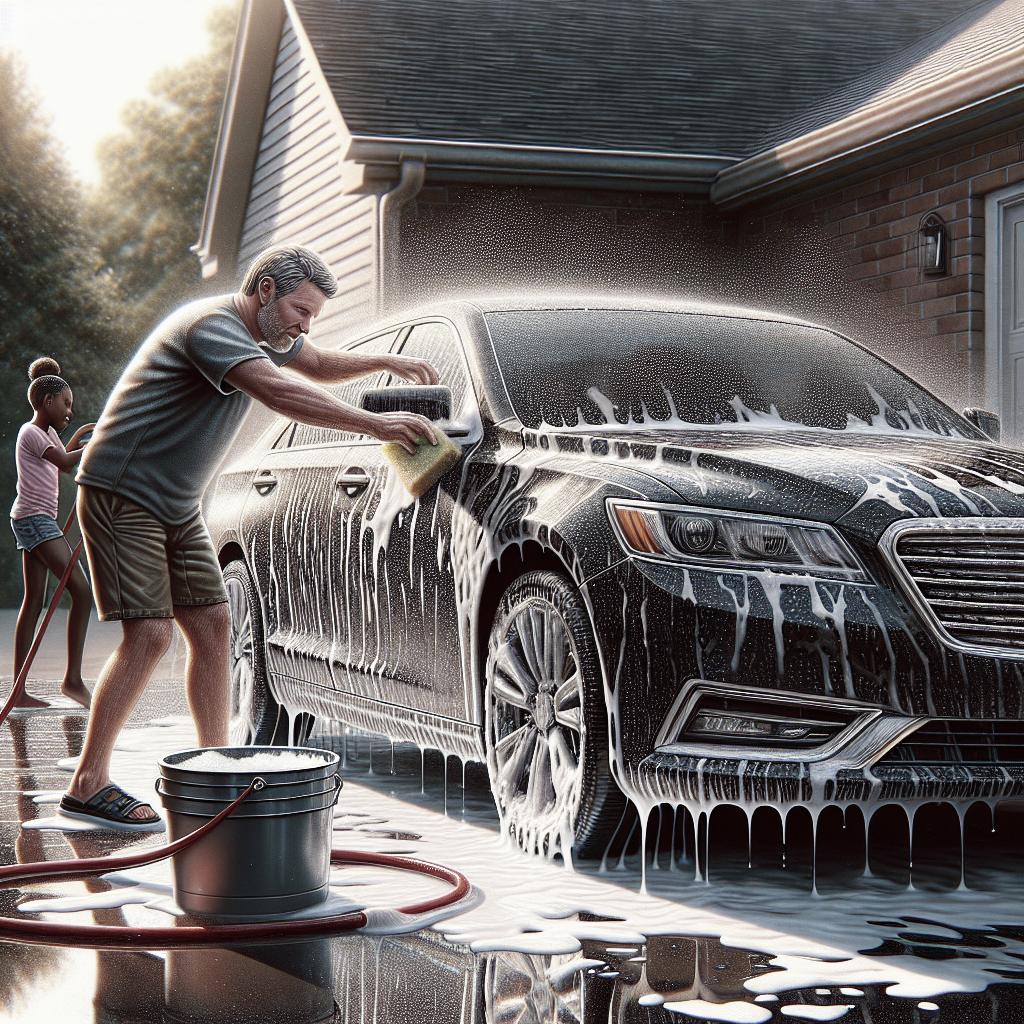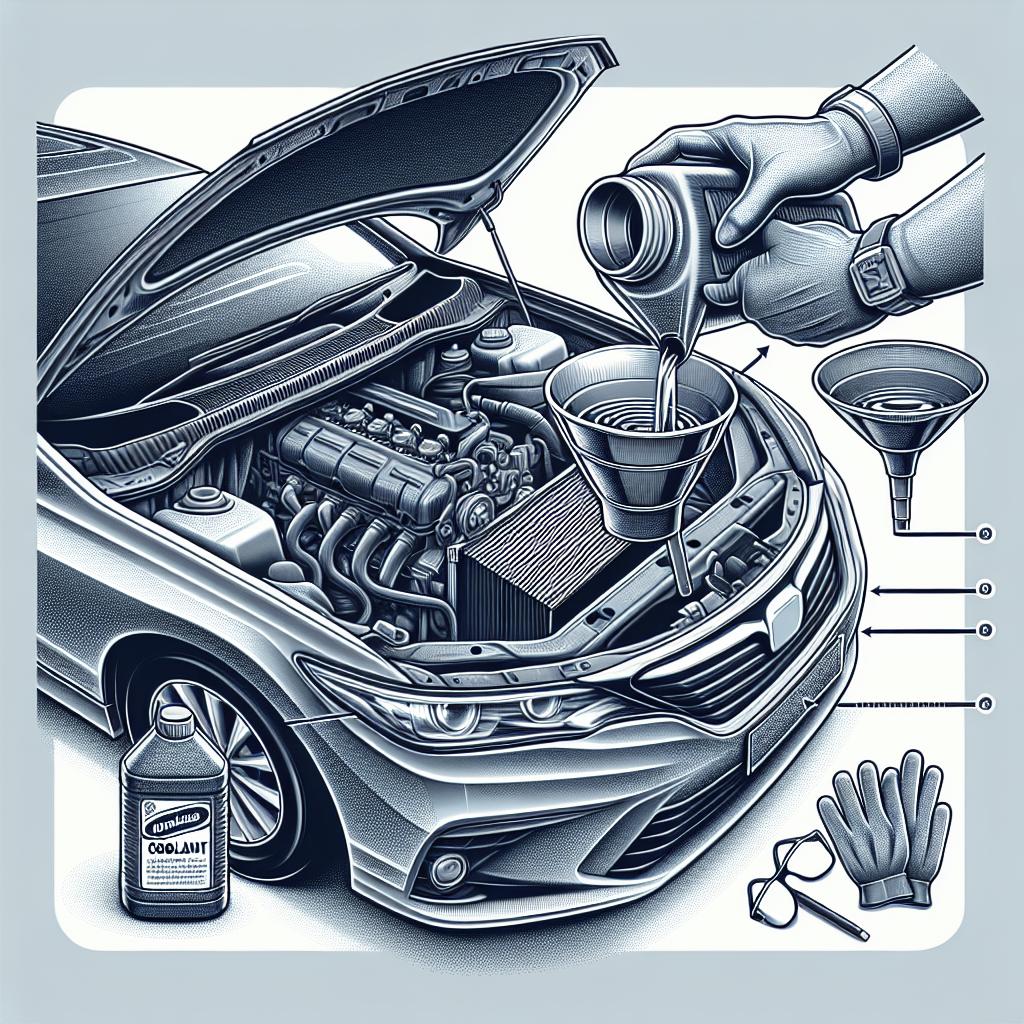“`html
How to Properly Wash Your Car
Learning how to wash your car correctly can not only improve its appearance but also extend its life by protecting the paint and preventing corrosion. A thorough wash involves both the exterior and the interior, using the right materials and equipment for optimal results. This guide will walk you through the process in a structured way, ensuring you have all the necessary tools, understand the steps involved, and know how often to repeat the process. With additional tips for interior upkeep and stain removal, you can keep your car in showroom condition with less effort over time.
Before You Get Started Washing Your Car
Before you dive into washing your car, it’s essential to assess the environment and conditions in which you’ll be working. Choose a shaded area on a relatively cool day to avoid the sun drying soap on your car, which can leave unsightly spots. Also, ensure you have easy access to water and drainage.
Preparation is key to an efficient wash. Gather all necessary supplies and inspect your car for any damages such as scratches or paint chips. Knowing these spots beforehand ensures you handle them gently or address them after cleaning for a perfect finish.
What You’ll Need
Equipment / Tools
To wash your car effectively, you’ll need a few essential tools. Start with a garden hose with a spray nozzle, buckets (ideally two), a sponge or wash mitt, microfiber towels, a soft-bristle brush for tires and wheels, and a vacuum cleaner for the interior. These will be instrumental in making your car shine inside and out.
For taller vehicles or hard-to-reach areas, consider using a step stool. Additionally, ensure you have a hose with adjustable pressure to reach different parts of your car without causing damage to delicate surfaces like windows and paint.
Materials
Using the right materials is critical for a safe and effective car wash. You’ll need car wash soap specifically designed for automotive finishes, a window cleaner that’s safe for tinted glass, and an interior cleaner suitable for various surfaces like leather or fabric. For a perfect finish, carnauba or synthetic wax is ideal.
If you decide to polish or wax, ensure you have the appropriate applicators and protective gloves. Specialty cleaners or conditioners might be needed for leather or vinyl interiors, so consider your car’s specific needs beforehand.
Instructions
Washing your car involves a multi-step process addressing both the exterior and interior. Begin by removing clutter inside and vacuuming thoroughly. Next, attend to dusting and cleaning various interior surfaces such as the dashboard and upholstery.
For exterior cleaning, start with a rinse to remove loose dirt, then follow up with soap and scrubbing. Don’t forget the wheels and tires, which might require particular attention. Rinse, dry, and consider applying wax for extra protection. Keep repeating each step methodically for consistent results.
How to Wash a Car at Home
Tidy the Interior
A clean interior enhances driving comfort, so begin by clearing any unnecessary items and organizing the essentials. Clean out all storage spaces, including the glove compartment and side panels, to start fresh.
Disposing of trash, old receipts, and expired documents not only declutters the car but also makes the cleaning process smoother. It sets the stage for focused cleaning efforts on the surfaces that matter.
Vacuum Floor Mats and Blow the Interior
Remove floor mats and give them a thorough shake. Use a vacuum cleaner with different nozzles to suck up dirt, crumbs, and dust trapped in fabric creases. If a blowout tool is available, use it to loosen debris from difficult-to-reach places.
A handheld vacuum can be handy for those narrow spaces and ensures you pick up all particles that can create an unkempt appearance and affect fresh cabin air.
Dust Cracks and Crevices
Use a microfiber cloth or a detailing brush to dust around the hard-to-reach areas, including cracks and vents. These tools are excellent in swooping up dust particles from nuanced spaces.
Don’t overlook the tiny buttons and knobs that collect dust over time, especially those on the dashboard and control panel. Small brushes can provide the precision needed for these tasks.
Vacuum the Floor and Upholstery
To vacuum the floors, temporarily remove any removable sections, such as child seats or pet mats, if applicable. Use a soft-brush attachment for upholstery to avoid scratching leather or delicate fabric.
Ensure you focus on seams and creases where dirt accumulates. Consistent vacuuming helps maintain a clean look and minimizes wear in these areas.
Wipe Down the Dashboard
The dashboard requires special attention since it is often exposed to sunlight and dust. Use a soft, damp microfiber cloth with a suitable dashboard cleanser to remove dust and residues.
Consider using a UV protectant spray to shield this area from sun damage. Make polishing movements circular to prevent streak marks on the surface.
Wash Windows
Clean car windows with a glass cleaner designed for automotive use. Spray the cleaner on a microfiber towel and wipe the glass, ensuring no streaking or residue remains.
Pay special attention to rear and side-view mirrors and ensure the inner side of windows is equally spotless for optimal visibility.
Replace Floor Mats
Once you’ve vacuumed and dusted the interior, replace clean mats or newly vacuumed ones. Ensure that they are snugly in place to prevent slipping during drives.
Using waterproof or custom-fit mats can assist in maintaining cleanliness longer, serving as a barrier against dirt.
Hose Down the Exterior
Start by rinsing the entire exterior to remove loose dirt. A garden hose with a moderate spray can efficiently reach all car areas, including the undercarriage, where grime can accumulate.
Pay attention to hidden spots like behind the wheels and the bottoms of doors to prevent damage from built-up mud and debris.
Lather and Scrub
Prepare a bucket of soapy water using car wash soap and another with clean water for rinsing your sponge or mitt. Beginning at the top and working your way down helps to avoid dragging dirt over clean areas.
Use even, circular motions to wash and continuously rinse the sponge to prevent scratching with dirt particles.
Clean Tires and Wheels
Tires and wheels require dedicated attention. Use a separate brush and cleaner intended for these components, as brake dust can be tough to remove. Scrub the rims and rubber thoroughly to maintain this often-overlooked area.
Leave the cleaner for a few minutes to dissolve tough grime before rinsing it away to reveal a pristine finish.
Rinse and Dry Exterior
Once the scrubbing is complete, rinse the vehicle thoroughly to remove all soap residues. Begin from the top to ensure efficient removal.
After rinsing, use a microfiber towel or a chamois cloth to dry the car. This prevents water spots from forming and ensures a streak-free finish.
Apply Wax (Optional)
Applying wax is a great way to protect your car’s paint and enhance its shine. Use a quality wax product, applying small amounts with an applicator pad in gentle, circular motions.
Buff the wax off using a clean microfiber cloth to achieve a glossy finish. While it’s an optional step, waxing can make future dirt removal easier and adds a level of UV protection.
Restore Headlights (Optional)
Over time, headlights can become cloudy due to oxidation. Consider using a restoration kit to polish them back to clarity by following the instructions on the product package.
This not only improves your car’s appearance but also ensures optimal headlight performance at night.
How Often to Wash a Car
The frequency of car washes depends on various factors like usage, climate, and road conditions. Generally, washing your car every two weeks is recommended to maintain its appearance and condition.
In harsher weather conditions or for cars that spend more time outdoors, more frequent washing might be necessary to prevent salt, dirt, or bird droppings from damaging the paint.
How to Keep Your Car Clean Longer
Keeping your car clean between washes can be a challenge, but some strategies can help. Use car covers to protect the vehicle from dust and environmental elements when parked outdoors.
Employing cleaning wipes for frequent touch-ups and regular interior decluttering can maintain a clean appearance and reduce the need for intensive washes.
Removing Stains From a Car
Some stains are stubborn and require specific attention. For fabric interiors, use a mix of water and vinegar as a natural spot remover. For more persistent stains, consider specially-formulated automotive cleaners.
On the exterior, butter-based lubricants can help with sticky residues. Applying and gently rubbing can lift these unsightly spots without harming the car’s paint.
Final Thoughts
| Step | Action |
|---|---|
| Preparation | Collect materials, inspect the car for damage, choose an appropriate wash location. |
| Interior Cleaning | Tidy, vacuum, dust, and clean various surfaces and areas. |
| Exterior Cleaning | Hose down, lather, scrub, rinse, and optionally wax. |
| Maintenance | Wash every two weeks, use covers, remove stains quickly. |
“`


